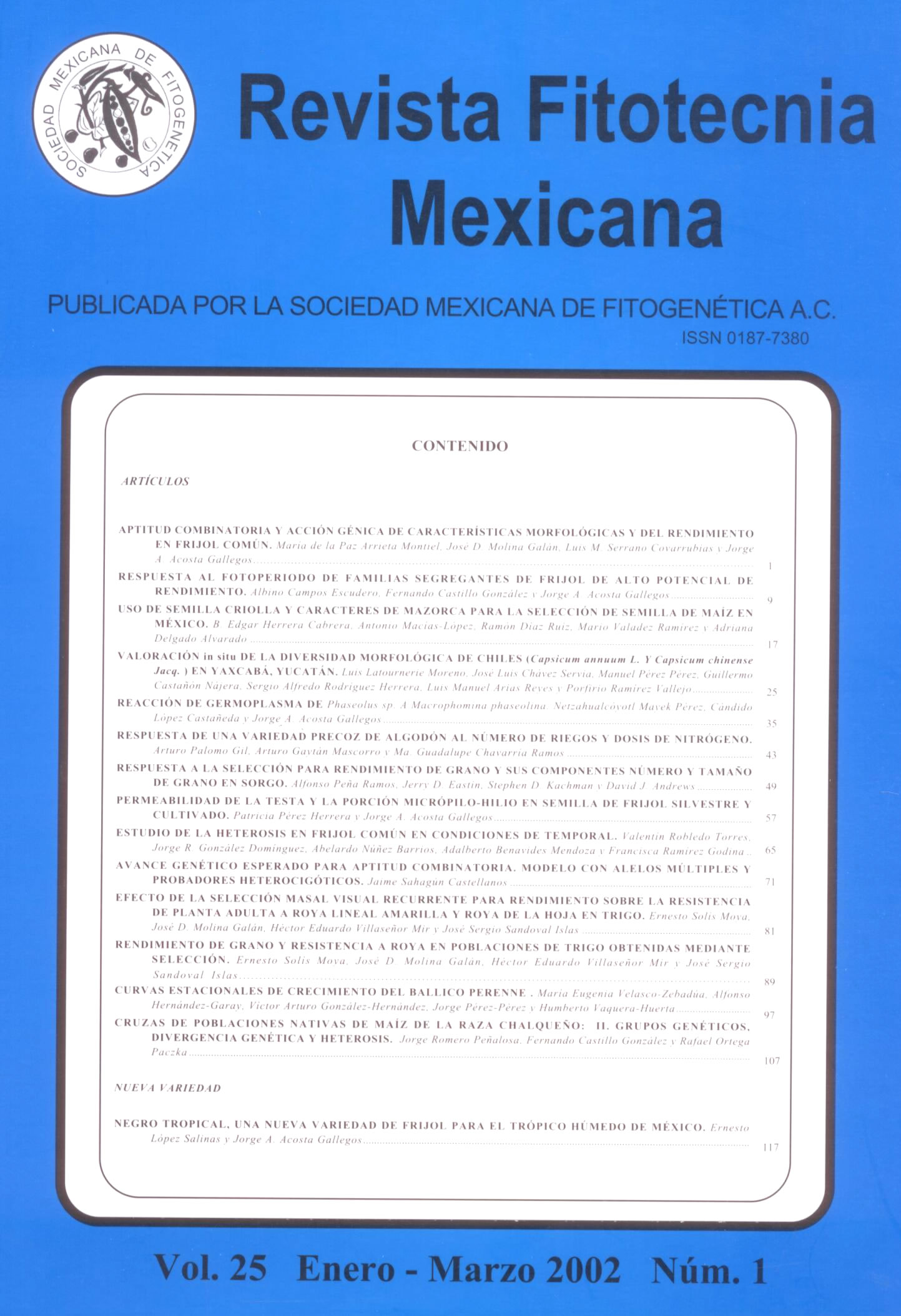In situ ASSESSMENT OF PEPPERS MORPHOLOGICAL DIVERSITY (Capsicum annuum L. AND Capsicum chinense Jacq.) IN YAXCABÁ, YUCATÁN
Main Article Content
Abstract
To describe the morphological diversity preserved in situ, and determine the relationship between chili classification by farmers and phenotypic morphological variability this research was conduced during 1999 in the community of Yaxcaba, Yucatan. Plan fruit and flower traits of 75 populations or samples were evaluated in 43 crop plots (Milpa) and honre gardens at the target community. Based on farmers taxonomy, seven morphotypes of landraces were classif ed; six of them belong taxonomically to Capsicum annuum L. and are referred to as Ya’ax ic, Cha’hua, Sucurre, Dulce, Xcat’ic and Maax or Maaxito, the last one being C. annuum var. aviculare (Dierb.). Besides a morpho type wildey known Habanero (C. chinense Jacq.). Farmers from the local community recognize three levels of diversity: among and within species as wellas the variation within populations or landraces that were grouped according to their folk taxonomy and simply named as types. Principal component, cluster and determinant analyses confirmed that there was high consistency, in more than 80 % of cases, between farmers' landrace names (or morphotypes) and the different morphological groups including certain morphologic complexes which were distinguished through their phenotyp1c description.

